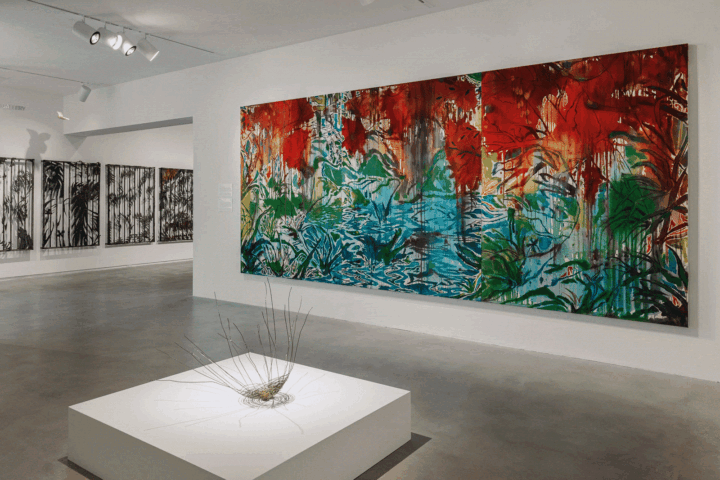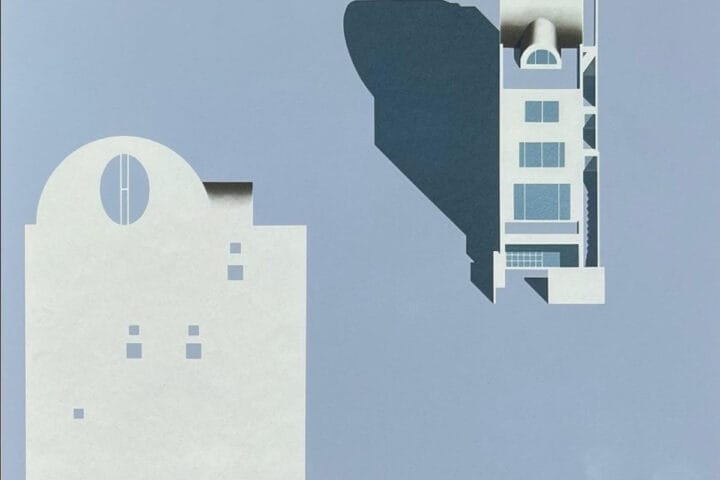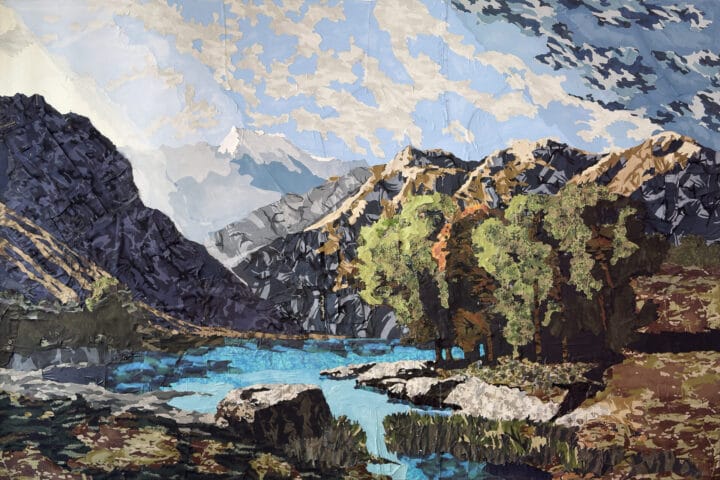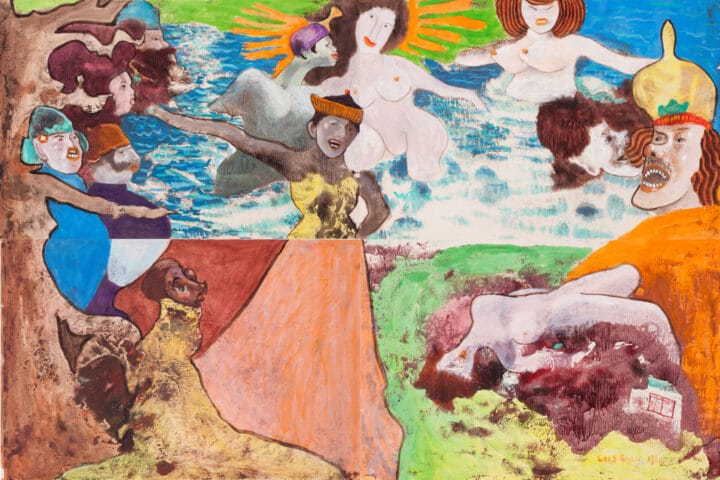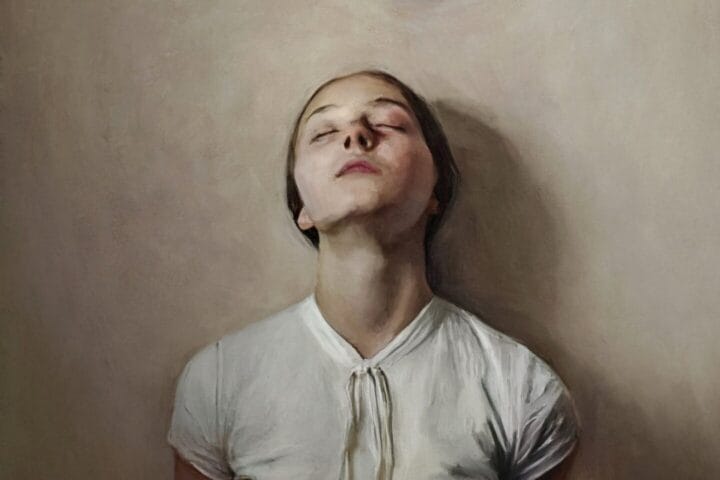Hazlitt Holland-Hibbert at Frieze Masters 2019. 3 – 6 October 2019. Section: Main – Booth C19
Hazlitt Holland-Hibbert at Frieze Masters: Peter Blake, Patrick Caulfield, David Hockney, Allen Jones, Eduardo Paolozzi, Peter Phillips, Richard Smith
Hazlitt Holland-Hibbert’s booth at Frieze Masters focuses on works by British Pop artists: Peter Blake (b. 1932), Patrick Caulfield (1936–2005), David Hockney (b.1937), Allen Jones (b.1937), Eduardo Paolozzi (1924- 2005), Peter Phillips (b.1939) and Richard Smith (1931-2016). Showcasing a range of key pieces from this important cultural movement, the booth presents works across a variety of media which both celebrate and critique the concept of popular culture.
Highlights include Paolozzi’s Study for Cleish Ceiling (1972), one of a group of panels created ahead of a ceiling commission at Cleish Castle, Scotland. Starting with reliefs on paper, Paolozzi crafted nine wooden panels based on abstract patterns from earlier prints (1970-71). The panels depict a complex arrangement of interlaced circles, squares, arcs, columns and waves serving to mimic musical scores, thereby capturing the essence of sound in visual form – a motif which subsequently became an integral part of Paolozzi’s distinct visual vocabulary.
An important work by Allen Jones, You Dare (1967), presents a set of steps which extend beyond the picture plane, protruding into the booth. Demanding an immediate interaction from the viewer, Jones’ work playfully threatens the rules of picture-making. Patrick Caulfield’s Perfume Jar, painted in 1964 (a year after he left the Royal College of Art), is an early example of his distinctive style. Despite being hailed as one of the originators of Pop Art, Caulfield always denied an interest in popular culture, instead choosing objects such as jugs or urns – with a strong presence in art history – as his subject matter. However, where historical painters sought to capture the objects’ three dimensionality, Caulfield purposefully used thick black lines and areas of bright colour to depict them in his flat, graphic style. My Garden (1975) is one of Richard Smith’s celebrated shaped canvases, in which he depicts an aerial view of the lawn at his family home. The grid-like arrangement of knotted strings denotes small bushes or shrubbery planted in neat rows. The painting belongs to a series of shaped canvases which Smith began in 1963 and continued to develop throughout the 1970s.
Website: https://hh-h.com/

